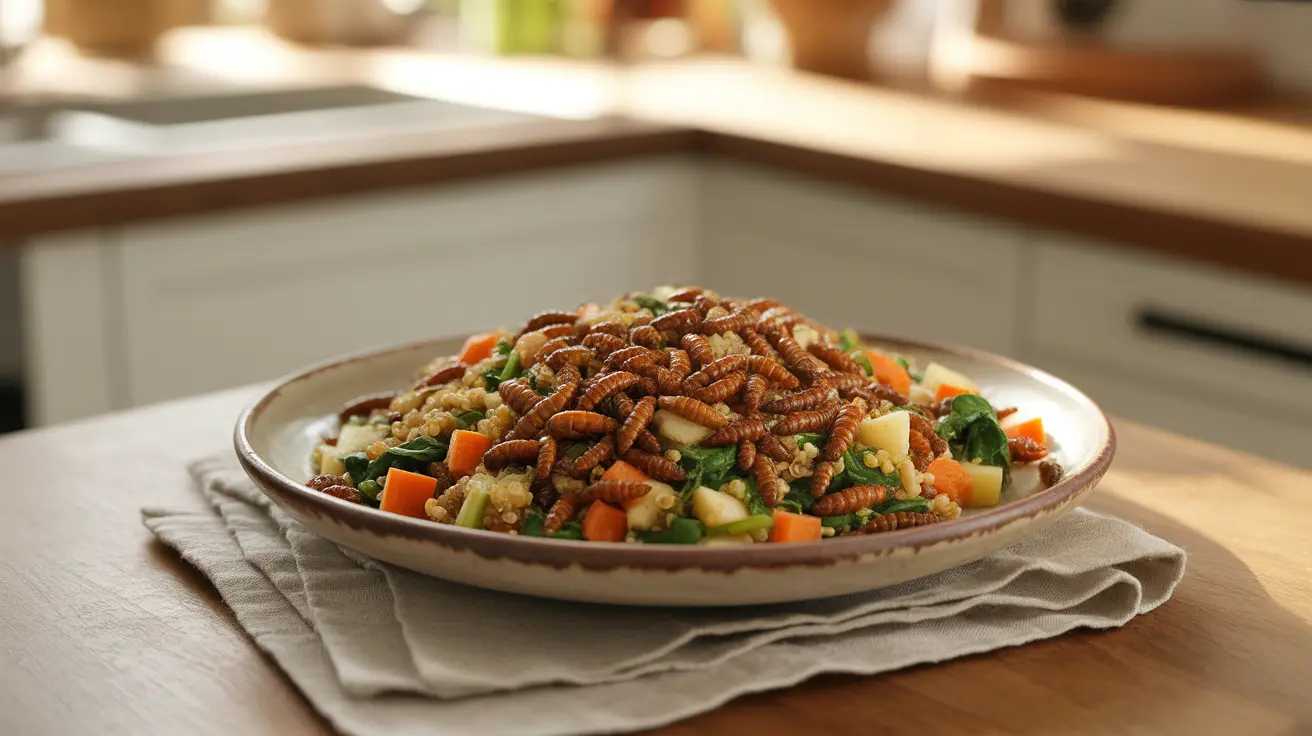As the world seeks sustainable and nutritious protein alternatives, mealworms have emerged as a promising food source that's gaining attention from nutritionists and environmentalists alike. These small, protein-rich insects are not only nutritious but also offer a sustainable solution to global food security challenges.
In this comprehensive guide, we'll explore the benefits, safety considerations, and environmental impact of incorporating mealworms into your diet, helping you make an informed decision about this alternative protein source.
Nutritional Profile of Mealworms
Mealworms pack an impressive nutritional punch that rivals traditional protein sources. They contain approximately 47-62% protein by dry weight, making them comparable to beef and fish. Additionally, they're rich in:
- Essential amino acids
- Healthy fats, including omega-3 fatty acids
- Iron and zinc
- B vitamins
- Fiber
Safety and Processing Standards
Commercially produced mealworms undergo strict safety protocols to ensure they're safe for human consumption. These insects are typically raised in controlled environments and fed a carefully monitored diet to prevent contamination.
Quality Control Measures
Reputable producers implement several safety measures:
- Regular testing for contaminants
- Strict hygiene protocols during breeding and processing
- Heat treatment to eliminate potential pathogens
- Quality assurance certifications
- Proper packaging and storage guidelines
Health Benefits and Applications
Research suggests that mealworms offer several potential health advantages when incorporated into a balanced diet:
Cardiovascular Health
The healthy fat profile of mealworms, including omega-3 fatty acids and essential fatty acids, may contribute to better heart health and reduced inflammation.
Weight Management
Their high protein content and fiber can promote satiety, potentially supporting weight management goals when part of a balanced diet.
Environmental Impact
Mealworm farming demonstrates significant environmental advantages over traditional livestock:
- Lower greenhouse gas emissions
- Reduced water consumption
- Minimal land use requirements
- Higher feed conversion efficiency
- Lower carbon footprint
Frequently Asked Questions
What are the nutritional benefits of eating mealworms compared to traditional protein sources?
Mealworms offer comparable protein content to beef and fish (47-62%), while also providing essential amino acids, healthy fats, and important minerals like iron and zinc. They're particularly rich in B vitamins and fiber, making them a nutritionally complete protein alternative.
How safe are mealworms for human consumption, and what are the main safety concerns?
Commercially produced mealworms are safe for human consumption when properly processed. They undergo strict quality control measures, including pathogen testing and heat treatment. The main safety concerns involve proper sourcing from certified producers and potential allergic reactions in people with shellfish or dust mite allergies.
Can eating mealworms help with weight loss or improve overall cardiovascular health?
Mealworms' high protein and fiber content can support weight management by promoting satiety. Their healthy fat profile, including omega-3 fatty acids, may contribute to cardiovascular health by reducing inflammation and supporting healthy cholesterol levels.
Are there any potential allergic reactions or side effects from consuming mealworms regularly?
People with shellfish or dust mite allergies may experience allergic reactions to mealworms due to similar proteins. It's recommended to start with small amounts and monitor for any adverse reactions. Consult a healthcare provider before adding mealworms to your diet if you have known allergies.
How do mealworms compare environmentally to traditional livestock farming in terms of sustainability?
Mealworm farming is significantly more sustainable than traditional livestock farming, requiring less water, land, and feed while producing fewer greenhouse gas emissions. They can convert feed to protein more efficiently than cattle and produce minimal waste, making them an environmentally friendly protein source.




